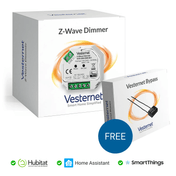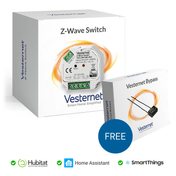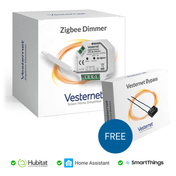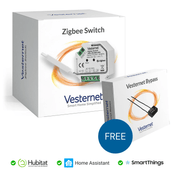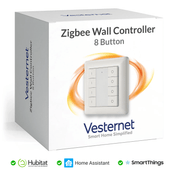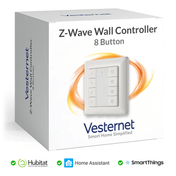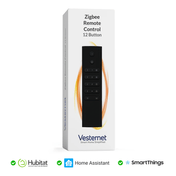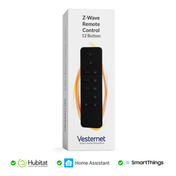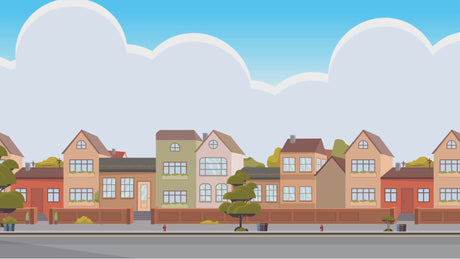Smart home technology has transformed how we interact with our living spaces, but even the most sophisticated systems can encounter problems. This guide addresses the most common smart home issues and provides practical solutions to help you quickly restore functionality and get back to enjoying the convenience of your connected home.
Understanding Smart Home System Architecture
Before diving into specific troubleshooting steps, it's helpful to understand the basic architecture of most smart home systems:
-
Devices: The individual smart products (lights, sensors, switches, etc.)
-
Controller/Hub: The central system that coordinates devices (Smart Home Controllers )
-
Network: The communication infrastructure (Wi-Fi, Z-Wave, Zigbee)
-
User Interface: Apps, voice assistants, and physical controls
Problems can occur at any of these levels, and understanding which component is causing the issue is the first step toward an effective solution.
Connectivity Issues: The Most Common Smart Home Problem
Connectivity problems account for the majority of smart home issues. When devices can't communicate reliably, even the most sophisticated system becomes frustrating.
Wi-Fi Connectivity Problems
Symptoms:
- Devices show as "offline" in your app
- Intermittent response to commands
- Slow reaction time
- Devices that worked previously stop responding
Solutions:
-
Optimize Router Placement
- Position your router centrally in your home
- Elevate it away from floors and obstructions
- Keep it away from metal objects and appliances
-
Reduce Network Congestion
- Use 5GHz networks for video devices when possible
- Move less critical devices to 2.4GHz
- Consider a dedicated IoT network
- Limit the number of devices per network (under 25 per network is ideal)
-
Update Router Firmware
- Check manufacturer's website for latest updates
- Enable automatic updates when available
- Consider upgrading older routers (3+ years old)
-
Extend Network Coverage
- Add mesh network nodes to eliminate dead zones
- Position extenders strategically between router and problem areas
- Consider dedicated Z-Wave or Zigbee networks for critical devices
Z-Wave and Zigbee Mesh Network Issues
Symptoms:
- Devices far from the controller respond slowly or not at all
- Intermittent control of certain devices
- Commands work sometimes but fail other times
Solutions:
-
Strengthen Your Mesh Network
- Add powered Z-Wave or Zigbee devices (not battery-operated) to extend the mesh
- Position mesh-extending devices strategically between controller and problem devices
- Ensure no device is more than 15-20 feet from another mesh device
-
Perform a Network Heal
- Use your controller's "heal network" function after adding new devices
- Schedule periodic network healing (monthly is recommended)
- Heal after moving any devices or making significant changes
-
Check for Interference
- Keep Z-Wave and Zigbee devices away from Wi-Fi routers
- Move devices away from large metal objects
- Identify and relocate potential sources of interference

Device-Specific Troubleshooting
Different types of smart devices tend to have their own common issues. Here's how to address problems with specific device categories:
Smart Lighting Issues
Common Problems:
- Lights turn on/off unexpectedly
- Bulbs unreachable or unresponsive
- Dimming functions not working properly
- Lights reset to default settings
Solutions:
-
For Unresponsive Bulbs or Switches
- Ensure the physical switch is in the "on" position
- Reset the device according to manufacturer instructions
- Check if the device needs a firmware update
- Verify compatibility with your controller
-
For Unexpected Behavior
- Review automation rules that might be triggering the device
- Check for conflicting schedules or scenes
- Look for sensor triggers (motion, door/window) affecting the lights
- Verify that multiple users aren't sending conflicting commands
-
For Dimming Problems
- Confirm the bulb/fixture is dimmable
- Check compatibility between dimmer modules and bulbs
- Update firmware on both controller and device
- Try a different brand of bulb if problems persist
Smart Sensor Issues
Common Problems:
- False triggers or missed events
- Battery draining too quickly
- Inconsistent reporting
- Delayed notifications
Solutions:
-
For False Triggers
- Adjust sensitivity settings if available
- Reposition the sensor away from sources of interference
- Check for environmental factors (drafts, sunlight, pets)
- Update firmware to latest version
-
For Battery Issues
- Replace with high-quality batteries
- Reduce reporting frequency if configurable
- Check for weak wireless signals causing retransmission
- Consider environmental factors (extreme temperatures accelerate battery drain)
-
For Missed Events
- Verify the sensor is within reliable range of your network
- Check physical mounting (loose sensors may not trigger properly)
- Clean any optical components (motion sensors, cameras)
- Test with the sensor closer to your hub to isolate range issues

Smart Lock and Security Device Problems
Common Problems:
- Failure to lock/unlock remotely
- Excessive battery drain
- Mechanical binding or resistance
- Inconsistent notifications
Solutions:
-
For Operation Issues
- Check door alignment and ensure smooth manual operation
- Recalibrate the lock following manufacturer instructions
- Verify adequate battery level (low batteries cause unpredictable behavior)
- Ensure the lock's wireless module is within range of your network
-
For Battery Problems
- Use high-quality alkaline or lithium batteries
- Check for mechanical resistance that increases power consumption
- Reduce polling frequency in advanced settings if possible
- Consider environmental factors (extreme cold significantly reduces battery life)
-
For Notification Issues
- Verify notification settings in both device and controller apps
- Check smartphone settings (notifications enabled, app background permissions)
- Ensure consistent internet connection for cloud-based notifications
- Test with a different mobile device to isolate the problem
Controller and Hub Troubleshooting
Your smart home controller or hub is the brain of your system, and problems here can affect all connected devices.
Common Problems:
- All devices become unresponsive
- Automations stop working
- Slow response throughout the system
- Interface issues in apps or dashboards
Solutions:
-
Basic Controller Maintenance
- Restart your controller (unplug, wait 30 seconds, reconnect)
- Check for available firmware updates
- Verify stable internet connection for cloud-dependent controllers
- Ensure adequate ventilation to prevent overheating
-
For Automation Failures
- Review automation logic for errors or conflicts
- Check if dependent devices are working properly
- Verify time settings and schedules are correct
- Rebuild problematic automations from scratch
-
For Performance Issues
- Remove unused devices and automations
- Split complex automations into smaller, simpler ones
- Consider upgrading to a more powerful controller if you have many devices
- Check CPU and memory usage if your controller provides these metrics
Software and App Troubleshooting
The software side of your smart home can also be a source of problems, particularly with updates and user interfaces.
Common Problems:
- App crashes or freezes
- Features missing after updates
- Inconsistent behavior between different control points
- Slow app performance
Solutions:
-
For App Issues
- Force close and restart the app
- Clear app cache in your phone's settings
- Uninstall and reinstall the application
- Check for app updates in your device's app store
-
For Update-Related Problems
- Check manufacturer forums for known issues with recent updates
- Roll back to previous firmware if possible
- Wait for patch updates (most major update issues are resolved quickly)
- Contact manufacturer support for critical problems
-
For Multi-User Setups
- Ensure all users have appropriate permission levels
- Verify all users have updated to the same app version
- Check for conflicting commands from different users
- Review activity logs to identify the source of unexpected changes

Advanced Troubleshooting Techniques
When standard solutions don't resolve your issue, these advanced techniques can help identify and fix more complex problems.
Network Diagnostics
-
Analyze Wi-Fi Environment
- Use Wi-Fi analyzer apps to identify channel congestion
- Change Wi-Fi channels to reduce interference
- Consider upgrading to Wi-Fi 6 for better device handling
- Implement Quality of Service (QoS) settings to prioritize smart home traffic
-
Test Direct Device Control
- Try controlling problematic devices directly through their manufacturer app
- This helps determine if the issue is with the device or your controller
-
Systematic Elimination
- Temporarily disconnect other devices to identify potential interference
- Create a minimal test setup with just essential components
- Add devices back one by one to identify problematic interactions
System Resets and Recovery
When all else fails, these more drastic measures can resolve persistent issues:
-
Controlled Reset Process
- Document your current setup (take screenshots of configurations)
- Export any available backups from your controller
- Perform a soft reset of problematic devices
- As a last resort, factory reset your controller and rebuild
-
Rebuilding Strategically
- After a reset, add devices back in logical groups
- Test thoroughly after each addition
- Recreate automations with simpler logic
- Consider reorganizing your smart home structure for better reliability
Preventative Maintenance
Prevent future problems with these smart home maintenance practices:
-
Regular System Maintenance
- Schedule monthly controller restarts
- Update firmware on all devices when available
- Perform network healing for Z-Wave/Zigbee networks
- Check and replace batteries in sensors before they fail
-
Documentation Practices
- Keep a log of all devices, including model numbers and installation dates
- Document your network configuration
- Save screenshots of important automation settings
- Maintain a troubleshooting journal to track recurring issues
-
Backup Procedures
- Regularly export controller configurations
- Back up automation rules and scenes
- Store device-specific settings when possible
- Keep original device packaging and instructions

When to Seek Professional Help
Some situations warrant professional assistance:
-
Persistent electrical issues that might indicate wiring problems
-
Complex integration challenges between multiple systems
-
Security vulnerabilities that put your home at risk
-
Consistent failures despite trying all appropriate troubleshooting steps
Professional smart home integrators can provide diagnostic services, system optimization, and solutions for complex problems beyond DIY capabilities.
Conclusion: Building a More Reliable Smart Home
Troubleshooting is an inevitable part of smart home ownership, but with systematic approaches and preventative maintenance, you can minimize disruptions and quickly resolve issues when they occur.
Remember that reliability often improves with system maturity—as you refine your setup, identify and replace problematic devices, and optimize your network, your smart home will become increasingly stable and dependable.
For the most reliable smart home experience, consider standardizing on proven protocols like Z-Wave and Zigbee rather than Wi-Fi for critical devices, and invest in quality components from reputable manufacturers like those available through
Vesternet's curated collections.
With the troubleshooting knowledge in this guide and quality components at the foundation of your system, you'll be well-equipped to maintain a smart home that enhances your life rather than complicating it.


















